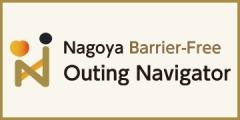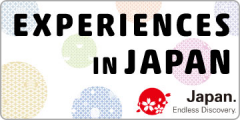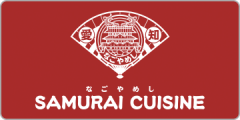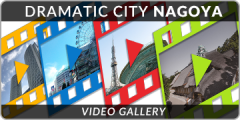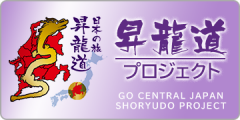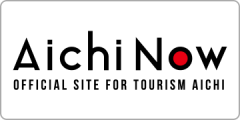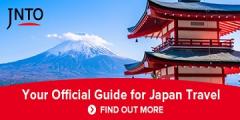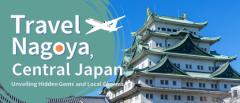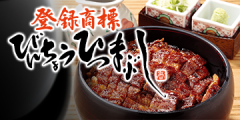- Home
- Sightseeing Spots
Sightseeing Spots
21 - 40 / 214 RESULTS
-
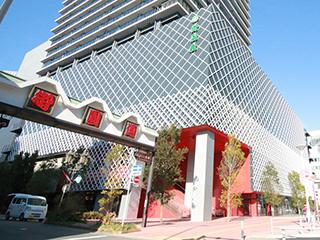
Sakae / Fushimi
Misonoza
Established in Meiji 29 (1896), this entertainment venue underwent a five-year reconstruction project and reopened in April 2018 as a modern 40-story tower condominium. It successfully fused tradition and innovation, transforming into a contemporary landmark. Hosting a diverse array of performances, such as kabuki, musicals, concerts, singer plays, Yoshimoto Shin-Kigeki,comedy shows, and rakugo (comic storytelling), this venue eagerly awaits the attendance of all guests. Come and enjoy the rich variety of shows and performances. See More
Established in Meiji 29 (1896), this entertainment venue underwent a five-year reconstruction project and reopened in April 2018 …See More
-
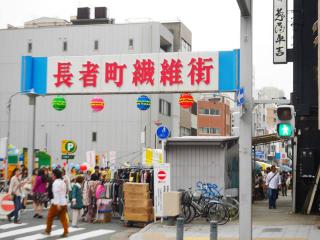
Sakae / Fushimi
Choja-machi Textile Wholesale
Choja-machi Textile Wholesale District is located in the center of Nagoya. It used to be a major textile wholesaling district in Japan. Today, shops dealing in fibers and textiles, variety goods shops, interior furnishing shops dealing in imported furniture, and cafes operate. See More
Choja-machi Textile Wholesale District is located in the center of Nagoya. It used to be a major textile wholesaling district in …See More
-
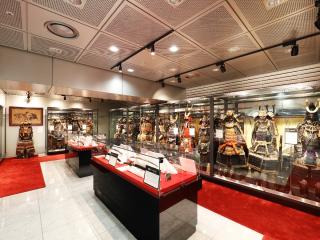
Sakae / Fushimi
Tokken World Nagoya Marunouchi
At the first floor of the Tokken Corporation headquarters, you can find a free exhibition showcasing traditional Japanese beauty - armor and Japanese swords. The exhibition includes swords, armor, spears, naginata, and matchlock guns. Notable pieces include important art swords and a lineup of contemporary armors (tosei gusoku). Visitors are welcome to take photographs during their visit. The displayed swords are rotated every three months, allowing for thematic special exhibitions to be held regularly. It's an opportunity to immerse yourself in the rich cultural heritage of Japan's traditional armaments and weapon. See More
At the first floor of the Tokken Corporation headquarters, you can find a free exhibition showcasing traditional Japanese beauty …See More
-
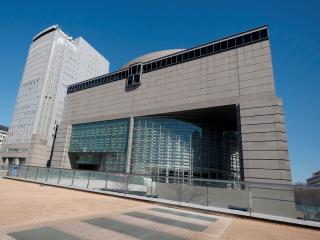
Sakae / Fushimi
Aichi Arts Center
Adjacent to Oasis 21, Aichi Arts Center is a consolidated art and culture complex composed of several key facilities. One of these is Aichi Prefectural Museum of Art, which has a collection of approximately 8,000 works, while another is the Aichi Prefectural Art Theater, with a main theater, a concert hall, and a mini theater, distinguishing it as one of the largest in the prefecture. There are also art spaces that can be used for lectures, exhibitions, and conferences, an art library where documents related to the arts are collected and made available to the public, a restaurant, an art shop, and more. See More
Adjacent to Oasis 21, Aichi Arts Center is a consolidated art and culture complex composed of several key facilities. One of thes…See More
-
![Nagoya City Environmental Education Center [ECOPAL NAGOYA]](/upload/spots/medium/5871703785e4b68d1ac688.jpg)
Sakae / Fushimi
Nagoya City Environmental Education Center [ECOPAL NAGOYA]
Exhibition room with four themes: Pollution and environmental protection, reducing waste, ecological diversity, and global warming With panels and why/what machines (touch screens) with easy-to-understand explanations, a garbage recycling game to learn about garbage separation, Eco Eco House where you solve puzzles to calculate amounts of CO2 reduction, and more, there are plenty of activities kids will love, too! We also hold temporary exhibitions that change every month. Learn about environmental problems by creating things in a workshop See More
Exhibition room with four themes: Pollution and environmental protection, reducing waste, ecological diversity, and global warmin…See More
-
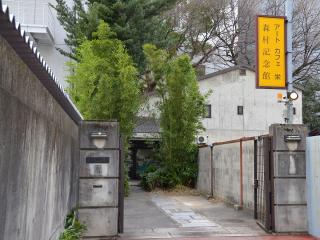
Sakae / Fushimi
Yamatoe Museum Morimura Memorial Hall
The "Yamatoe Museum Morimura Memorial Hall" introduces the flow of the Yamatoe painting style that originated in the Owari region from the late Edo period. It aims to familiarize citizens with the Yamatoe, which depicts scenes of the four seasons in traditional Japan. The museum also serves as a relaxing spot in the city center, offering special exhibitions relevant to the current times. On the first floor of the museum, there is a cafe where visitors can enjoy a beverage. Additionally, the museum offers classes in Japanese painting (Yamatoe), tea ceremony, calligraphy, and flower arranging. The facility strives to be a place of cultural exchange and appreciation for traditional arts and serves as a hub for the community's leisure and cultural activities. See More
The "Yamatoe Museum Morimura Memorial Hall" introduces the flow of the Yamatoe painting style that originated in the Owari region…See More
-
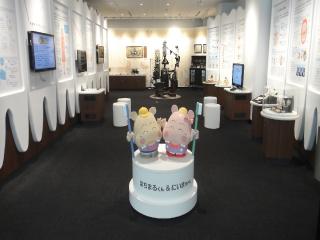
Sakae / Fushimi
Dental Museum
The Dental Museum was opened in 1989 to promote better understanding of oral hygiene and there are few such museums in Japan. Visitors can enjoy rare experiences including seeing an ancient examination room and checking their knowledge of oral hygiene. See More
The Dental Museum was opened in 1989 to promote better understanding of oral hygiene and there are few such museums in Japan. Vis…See More
-
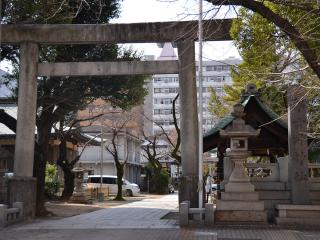
Sakae / Fushimi
Nagano Shrine
Nagono Shrine was originally enshrined in the current Marunouchi area of Naka Ward in the 11th year of the Enki era (911). It served as the guardian deity of the castle and was revered as the ancestral God of Nagoya. With the abolition of feudal domains, it was moved to its current location in the 9th year of the Meiji era. On July 15th and 16th, the shrine holds a grand festival during which portable shrines and festival floats parade through the streets. Nowadays, both Nagono Shrine and Toshogu Shrine are famous for cherry blossoms in the area. See More
Nagono Shrine was originally enshrined in the current Marunouchi area of Naka Ward in the 11th year of the Enki era (911). It ser…See More
-
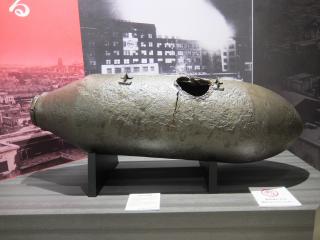
Sakae / Fushimi
Aichi-Nagoya War Memorial Museum
The "War Memorial Museum" is a place where visitors can contemplate war through actual materials collected from local residents. The museum exhibits real artifacts related to war, donated by citizens and residents of the prefecture and city. Groups can also arrange guided tours with explanations by museum staff if they make reservations at least 30 days in advance. If you're interested, feel free to inquire about it. The Aichi Prefectural Government Otsu Bridge Annex Building, where the museum is located, is a historically significant structure completed in 1933. You can admire the architectural features of that era, such as the popular scratch tiles and intricate plaster decorations. See More
The "War Memorial Museum" is a place where visitors can contemplate war through actual materials collected from local residents. …See More
-
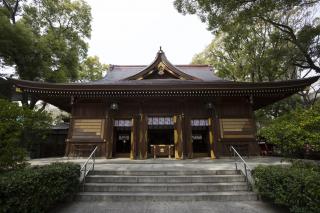
Sakae / Fushimi
Wakamiya Hachimansha Shrine
The enshrined deities of Wakamiya Hachimansha Shrine are Emperor Nintoku, Emperor Ojin and Takeuchinosukune, a legendary person who served in Japan's first imperial government. Tokugawa Ieyasu designated the shrine to be the main tutelary deity of Nagoya in 1610. In addition to its regular festivals, the Wakamiya Festival held on May 15-16 every year; the harikuyo festival, a memorial service for dull and broken needles; and other festivals and events are held. See More
The enshrined deities of Wakamiya Hachimansha Shrine are Emperor Nintoku, Emperor Ojin and Takeuchinosukune, a legendary person w…See More
-
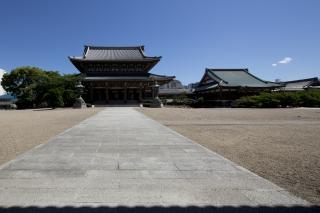
Sakae / Fushimi
Hinshu Otaniha Nagoya Temple (East Branch)
Located in the city center, there is a central dojo or traininghall for followers of Shin Buddhism in the Owari region. It is a branch temple of the Shinshu Otani-ha (East branch). Established in 1690 on the former site of the residence of Oda Nobuhide, Known as "Gobosan"' In recent times, it is also referred to as "Higashi Betsuin"(or East Branch) which is the name of a subway station on the Nagoya Municipal Subway line. On the 12th of each month, there are events called 'Ennichi Ichinyusan' and 'Onjiki Market,' and on the 8th, 18th, and 28th, the "East Branch Temple Morning Market Lifestyle" is held, attracting a large number of visitors." See More
Located in the city center, there is a central dojo or traininghall for followers of Shin Buddhism in the Owari region. It is a…See More
-
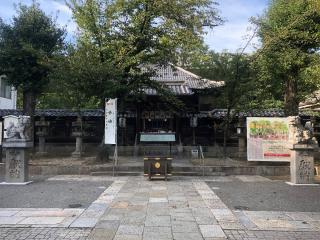
Sakae / Fushimi
Nagoyatoshogu
Nagoya Toshogu Shrine was established by Tokugawa Yoshinao, the founder of the Nagoya Domain, in the 5th year of the Gen'wa era (1619), enshrining Tokugawa Ieyasu, the founding shogun of the Tokugawa Shogunate, within Nagoya Castle. In the 8th year of the Meiji era (1875), the shrine was relocated to its current location. However, it was tragically destroyed by the bombings during World War II in the 20th year of the Showa era (1945). The current main hall of the shrine is a reconstruction, originally being the memorial hall (otamaya) of Tadayori, the lawful wife of Yoshinao. This structure was moved from Wanchosan Temple to Kenchuji Temple in the 3rd year of the Taisho era (1914) and then transferred to the present site in the 29th year of the Showa era (1954). It is now designated as an Important Cultural Property of Aichi Prefecture. Before the war, the Toshogu Festival used to feat… See More
Nagoya Toshogu Shrine was established by Tokugawa Yoshinao, the founder of the Nagoya Domain, in the 5th year of the Gen'wa era (…See More
-
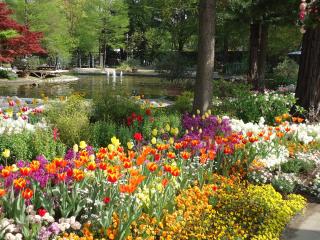
Sakae / Fushimi
Hisaya-odori Garden Flarie
Made of 6 themed gardens which allow you to enjoy the city's greenery, flowers, waterscapes, and more while you are able to take walks, eat, and shop. Events and various classes are also held here. See More
Made of 6 themed gardens which allow you to enjoy the city's greenery, flowers, waterscapes, and more while you are able to take …See More
-
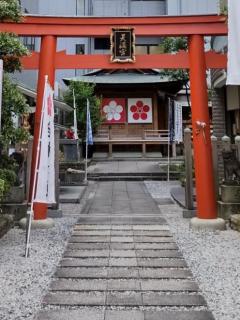
Sakae / Fushimi
Sakura Tenjinsha
One of the three major Tenjin shrines in Nagoya. It is said to have originated when Oda Nobuhide, the father of Oda Nobunaga, enshrined a wooden statue of Sugawara no Michizane that was transferred from Kitano Tenmangu Shrine. He placed it in a shrine at the Nakano Castle. This area was known for its cherry blossoms, and as a result, the shrine came to be called Sakura Tenmangu or Sakura Tenjin. See More
One of the three major Tenjin shrines in Nagoya. It is said to have originated when Oda Nobuhide, the father of Oda Nobunaga, ens…See More
-
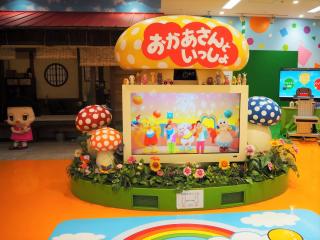
Sakae / Fushimi
Broadcast Experience Studio Waku Waku
The exhibition includes the "Okaasan to Issho Taisou Hiroba" (Exercise Square with Mom and Dad), "Chiko-chan Shoukai Corner" (Chiko-chan Introduction Corner), "Manekko Doomo-kun," "Wanwan Shoukai Corner" (Wanwan Introduction Corner), "Okaasan to Issho Character Shoukai Corner" (Introduction of Characters from Mom and Dad Are with Me), "Housou Bangumi Shoukai Corner" (Broadcast Program Introduction Corner), and more. ※The program public library is currently suspended. See More
The exhibition includes the "Okaasan to Issho Taisou Hiroba" (Exercise Square with Mom and Dad), "Chiko-chan Shoukai Corner" (C…See More
-
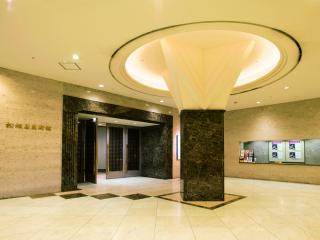
Sakae / Fushimi
Matsuzakaya Museum
Located in the south wing of Matsuzakaya Nagoya in Sakae, downtown of Nagoya. The museum that you can drop while at shopping. Though, this museum does not have its own collection, but instead be held a series of high-quality exhibitions of paintings, crafts, and other works from Japan and abroad. See More
Located in the south wing of Matsuzakaya Nagoya in Sakae, downtown of Nagoya. The museum that you can drop while at shopping. Tho…See More
-
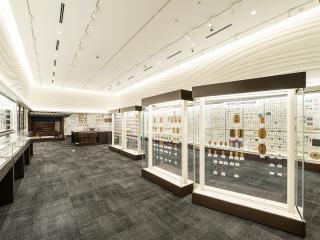
Sakae / Fushimi
MUFG Bank Money & Ukiyo-e Museum (Formerly MUFG Bank Money Museum)
With the aim of contributing to society by preserving cultural properties and educating the public about them, this museum owns around 15,000 rare coins and bank notes and 1,800 ukiyo-e woodblock prints which are put on public display. The money exhibition room displays rare coins and notes from Japan and various countries around the world, including the world's oldest currency in the form of Shang dynasty cowrie shells. The Japanese currency features a gold coin called "Tensho Oban" whose production was ordered by Hideyoshi Toyotomi as well as Edo period currency and printing blocks, few of which are extant today. See More
With the aim of contributing to society by preserving cultural properties and educating the public about them, this museum owns a…See More
-
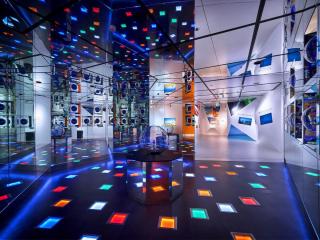
Sakae / Fushimi
The Electricity Museum
This museum has an exhibition room where visitors can learn all about electricity, the environment and energy. The Ohm theater is where interesting experiments help teach the mysteries of science. Patrons can play fun games using their own faces. This participation-oriented museum allows anyone to see, touch and experience science. See More
This museum has an exhibition room where visitors can learn all about electricity, the environment and energy. The Ohm theater is…See More
-
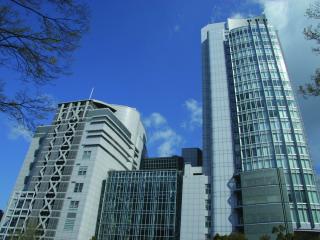
Sakae / Fushimi
International Design Center NAGOYA (within NADYA Park)
The world of design is introduced widely at the “creator's shop Loop" (B1) that sells works of and supports activities by creators, and the Design Gallery (4F) where designers and firms make their presentations. This is a strong point to support the design creation. See More
The world of design is introduced widely at the “creator's shop Loop" (B1) that sells works of and supports activities by creator…See More
-
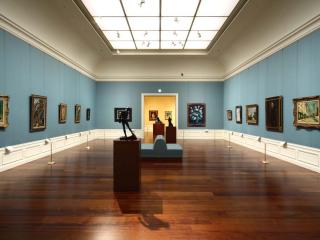
Sakae / Fushimi
Yamazaki Mazak Museum of Art
This museum allows you to gaze over the 300-year history of French art from the 18th to 20th century with French Rococo to Ecole de Paris painted pieces, Art Nouveau glasswork and furniture pieces represented by Emile Galle, and more. ・Easy access, directly connected to Exit 1 of Shinsakae-machi Station on the subway Higashiyama Line ・Many Rococo paintings, including works by Marie Antoinette's personal painters ・The galleries are decorated with chandeliers and wallpaper that turn them into 18th century salons ・Free audio guides available See More
This museum allows you to gaze over the 300-year history of French art from the 18th to 20th century with French Rococo to Ecole …See More





